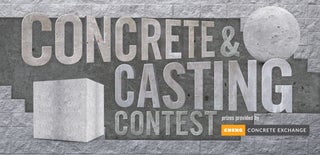Introduction: Back to the Future 2: Pitbull Hoverboard
I made this thing for a friend's birthday present this year and I thought I would take some time to show you guys and dolls how I did it...
I will say, everything I have done here was done with hand tools and power tools, I am pretty happy with how this project turned out anyway, but I know that I could have done a much cleaner job with higher efficiency if I had a laser cutter to help me out in the process. I quit my job a few years ago to make props for clients full time, I have been wanting to invest in a laser cutter and 3D printer to be able to expand my capabilities and produce a higher level of build quality.
Step 1: The Blueprint
So the first thing that I always do it lay out a blueprint to make my piece off of so that I don't have to eyeball it all the way through and come out with something that looks... eyeballed?
I was lucky enough to find a premade blueprint on theRPF by member GoodGame that had all the sizing on it already... SCORE!!!!
I printed this out on regular paper and that made it about 10.5" long on my page. I took my print over to Kinko's (copy shop) and enlarged it by 300% on their large scale printer. (I made 3 copies of the print; 1 for cutting out the basic deck shape, 1 for the detail shapes and measurements, and one for Murphy.)
Step 2: Cutting Out the Deck
First thing I did was take some 1/4" MDF and laminated 2 layers of it with a 1/16" sheet of ABS in between so that I would not only have the thickness I need, but also to be able to keep my bevels on the edges centered when I sanded them in later. I did this with Gorilla brand wood glue.
Next I took some 3M spray adhesive and pasted one of my blueprint copies onto the MDF laminate and cut out the Shape with a jigsaw. The bevel on the edge of the deck is roughed to shape with 60 grit paper which probably would have been easier to do before I cut all the crescents out of it (just keep ripping the paper) but live and learn right?
I totally forgot to take a photo of my blueprint for the engine (sorry), but it was basically sketched out on a sheet of paper over the scaled blueprint so that I could get the sizing correct. The master shape was turned out of a block of polyurethane casting resin.
I will talk about the magnet shape in the next step.
Step 3:
I made a base for the magnet on my lathe buy layering 4 pieces of 1/4" MDF and turning it to shape until it fit the board and spec on the blueprint.
The shape was then coated in filler primer and spin sanded on the lathe to 220 grit.
There are also these holder bits that "hold" them to the board right? I cut those pieces out from 1/4" MDF and vacuuformed over the master magnet so I could get some detailed pieces trimmed out and get it all glued together... I know that makes no sense but just look at the photos... the seams between the MDF and ABS were filled in with Bondo and sanded down smooth.
I then made a mold of the master magnet with holders and cast a couple with some foam inside to save on weight. You'll see a photo of that later on...
Step 4: Making the Engines
Making the rocket was a pain in the butt, but I did manage to thank myself for making the end plate on it a separate piece. The fins are made of 1/8" styrene sheet, glued into place and the sanded to shape. This made fabrication much easier as I do not have a laser cutter or a 3D printer to make my life easier. There are also these recessed areas on the thickest part of the rocket that I made by layering 1/16" styrene on and filling the gaps with bondo, then smoothing it all out. After all of that was said and done. I was able to prime it and make it look pretty for molding (I really didn't want to build 2 of them, not to mention, they'd be really heavy).
The mold was pretty straight forward, I brushed up layers of silicone that I purchased from SilPak in Burbank, CA and the mold jacket is made of a Bondo and Resin mixture layered with fiberglass matting. In order to get the master and castings out of the mold, I did what is called a "French Cut" to split the mold open, this style of cut will let the silicone register nicely inside of the mold jacket.
The castings are made of polyurethane resin and slush cast so they would be nice and light and hollow.
Step 5: Battery Pack
The battery pack part is pretty simple too, I made that from the blue print from a double layer of 1/4" MDF, mold and cast it and then cut little recess slots in the bottom of it to accept the magnet braces on either side.
Step 6: First Mockup
So with the base in black primer, a few bits cast and primed in gray filler primer, I balanced it out for a first look a where I was headed, not bad so far...
Step 7: Brace
The brace that holds the engines on was made from MDF, molded and then cast with a metal bar on either side for rigidity. The engines are hollow and a hole is trimmed into them with an exacto knife that just accepts the brace.
I know that the photos have the winches in place but I will talk about those next...
Step 8: Winches
The winches were pretty simple to make.
The spindles were made from some wooden dowels and slices of 1/2" PVC, the brackets around the spindles are strips of ABS that were bent into right angles. They are superglued together on the ends and braced with the pull pins from pop rivets for the look and extra durability.
Later they will be wrapped in Paracord to act as a winch cable.
Step 9: Full Mockup
I was pretty excited to get most of this thing assembled and see what it would look like...
Step 10: Details
All of the details on the board are made from ABS and MDF that were glued into place and rivets were added for the look. Pretty simple I know... but this was 100% the easiest part of the build.
Step 11: Painting
For this thing I used all Rustoleum rattle can paint that I had laying around already.
This was not a fancy process... Mask it, Spray it, wait, mask, spray, wait, mask, spray, wait, weather with acrylic washes (browns and black)
Sidenote: The tow straps are small dog collars that are held in place with some nylon webbing that was looped and hot glued into place. No big whoop...
Step 12: Graphics
I am really lucky to have awesome friends. My buddy (theRPF member PedroAloha) did up a graphic for me that I sent over to CarStickers.com... $25 and 2 weeks or so later I had something cool in my mailbox....
I'm sorry that I didn't mention the heat shields but I forgot to take progress photos of that (it all happened so fast!!!). The shields are made of the same stuff you would make a security door out of and they are held in place with 2 pop rivets on either side.
Step 13: The Finished Product
Just took some photos of this thing... Hope you like it.

Second Prize in the
Halloween Props Contest 2015

Runner Up in the
Epilog Contest VII

Grand Prize in the
Back to the Future Contest

Participated in the
Concrete and Casting Contest













